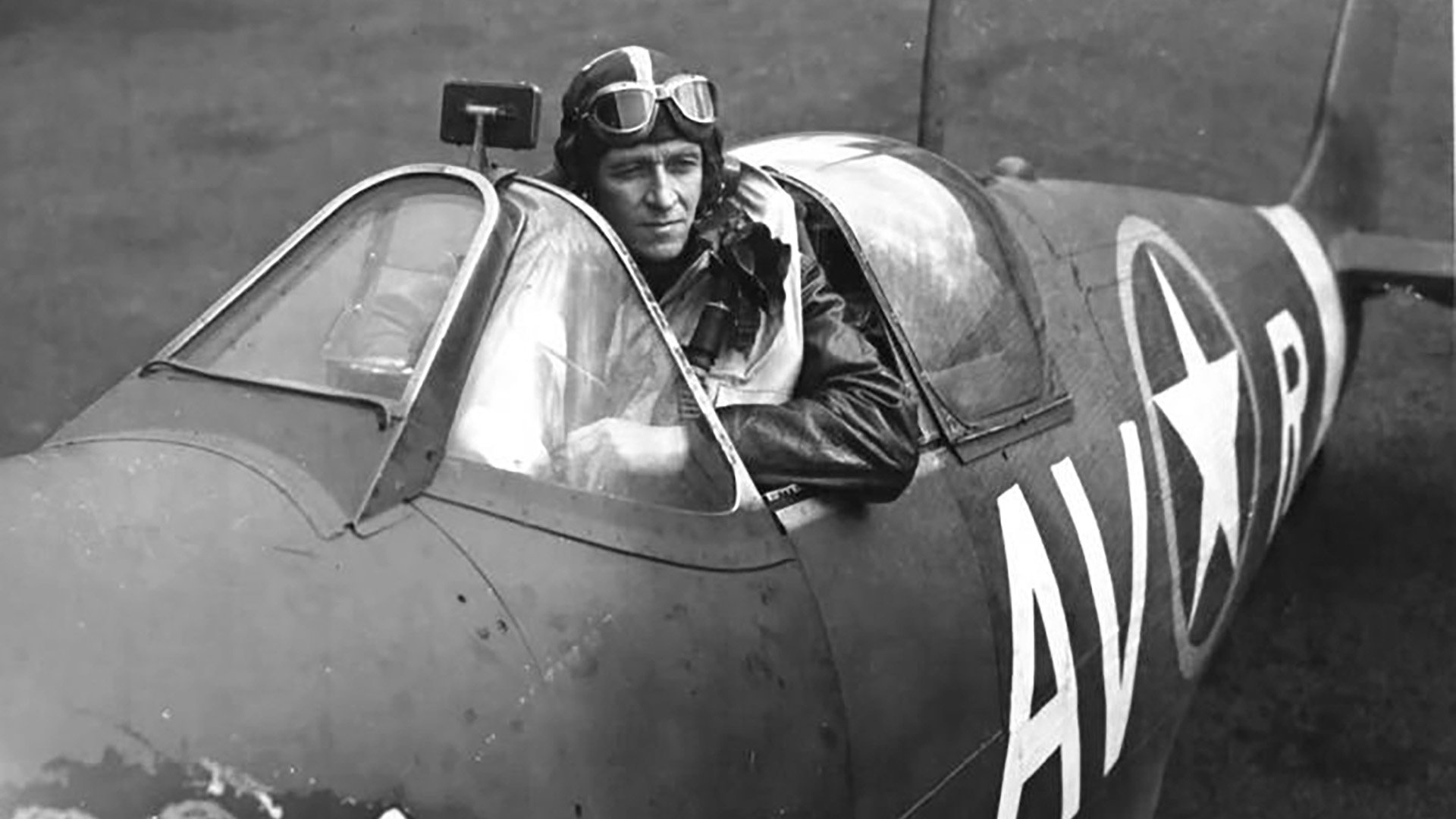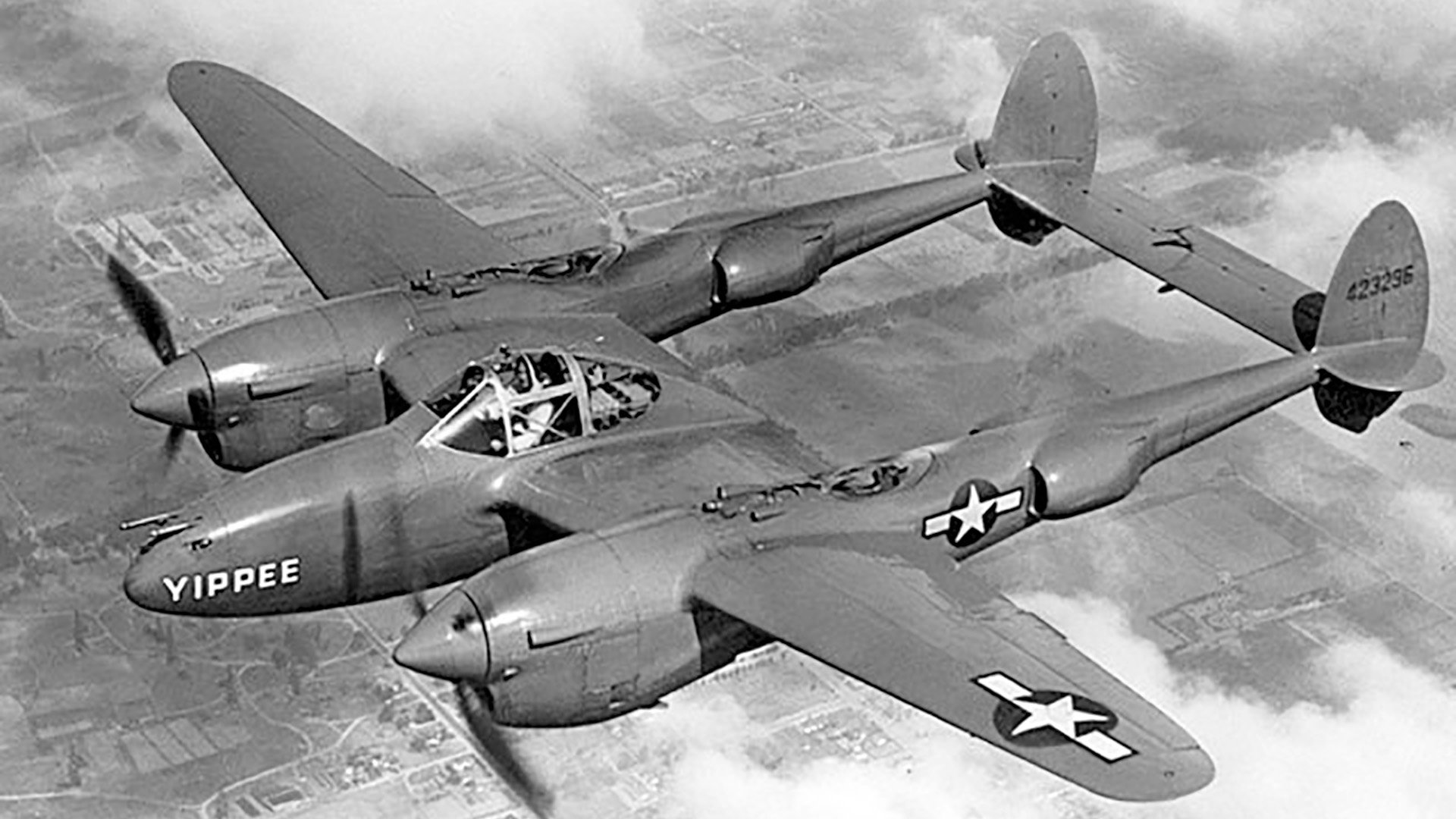The American Aviator Who Crash-Landed Into a Soccer Game, Then Stopped for Beers While Evading Nazis

Donald Willis pictured in the cockpit of a Spitfire Mk V. Photo courtesy of the American Air Museum in Britain.
On April 10, 1944, Maj. Donald K. Willis was piloting his P-38 Lightning over Germany during a bombing mission when enemy flak struck one of his engines. Willis crash-landed his fighter plane along the coast of Holland, near the Walcheren Islands, interrupting a soccer game. Emerging from the wrecked aircraft, Willis saw a frenzy of spectators, players, and officials scattering in all directions.
Eventually, a crowd of hundreds formed nearby. Willis scanned the field for a means of escape. If he didn’t leave the area immediately, German search parties would soon arrive to capture the American aviator and interrogate him for information. His only good option, as far as he could see, was to try to flee the area, then blend in among the locals and head southwest toward Spain in hopes of reaching friendly lines.
During World War II, downed pilots and aircrew often relied on sympathetic civilians to help them avoid capture behind enemy lines. Local European resistance groups assisted more than 3,000 Allied airmen in their escapes from German-occupied territory during the war. As the war progressed, the Allies developed more sophisticated means of evasion of their own, including using safe houses along various escape routes established by the British Special Operations Executive, which led to the neutral territories of Spain, Switzerland, and Sweden. However, according to official military records, Willis didn’t have any contacts on the ground in Holland. He therefore had to rely primarily on training he had received at an escape and evasion course in Debden, England, which taught him to improvise and trust his intuition if he ever found himself in a jam like the one he was in now.
But of course, before he could put that training to use, Willis had to first escape the crash site. As German soldiers began arriving on the scene, Willis observed a nearby bike path and ran to it. According to an after-action report now housed in the National Archives. Willis managed to steal a bicycle and a long red coat, which he slipped on over his flight suit. Thus disguised, he peddled down the path, trailing behind a group of local cyclists as they rode away from the crash site.

A Lockheed P-38J-20-LO Lightning airplane with "Yippee" painted across the nose. This was a similar aircraft to the one Willis piloted in World War II. Wikimedia Commons photo.
Willis followed the cyclists into a small village. He leaned his stolen bicycle against a stone bench and sat there contemplating his next move. Then, a carload of German soldiers and dogs arrived in the village and began searching for him. Willis followed the search party through a field, keeping his distance, until they were far enough away that he could take refuge inside a barn. There, he was discovered by the woman who owned the barn. Holding a baby, she warned Willis in Dutch she wouldn’t tell the Germans unless they came back.
Willis understood enough of what the woman was saying to know that he had to get out of Dodge, and fast. So he scrambled down a drainage ditch and into a field of high grass, where he remained until nightfall. Then, with his compass in hand, he walked along a footpath flanked by fences and dikes.
Around midnight, he came upon a haystack and climbed inside to rest, but he was soon discovered by two children — a young boy and girl. He informed the kids that he was an American, making the risky assumption that they were sympathetic to the Allies — or at the very least, not loyal to the Nazis. He assumed right: The children agreed to leave him alone and let him rest until morning. The boy returned after sunrise and accompanied Willis for a short distance as he continued his journey, pointing out German-occupied areas to avoid.
Willis journeyed through the city of Rosendall and eventually crossed into Belgium. On the outskirts of Antwerp, the eagle-eyed aviator spotted a sign advertising “Boch” beer at a roadside cafe. Naturally, he went inside. The patrons paid no attention to the disheveled man in an oversized red coat covered in hay as he moseyed up to the bar. But one look from the bartender and the jig was up. The bartender brought Willis into a back room and gave him some eggs and bread to eat with his beer before pointing him in the direction of Brussels.
From there, Willis followed some railroad tracks until he reached a train station. The ticket porter offered to help Willis and gave him some food. However, while he was eating, Willis heard someone say the police had been called, and he ran out the back door.

American hero Donald K. Willis didn't stop once, but twice to grab a refreshingly cold beer while on the run from the Nazis. Photo courtesy of the American Air Museum in Britain.
Continuing on foot, Willis often passed German patrols and railroad workers, and he did his best to keep a low profile. Eventually, he arrived in a small Belgian town called Boom. German sentries controlled a road bridge by the railroad and were checking the identification papers of civilians and laborers before they crossed to the other side.
“My opportunity came when two women stopped to talk to the guards and while their attention was diverted I went up to one of the labor groups and hitched onto the pole they were carrying,” Willis explained in his after-action report. “The men looked at me but said nothing.”
When Willis reached the other side, he discovered a German with a rifle overseeing the laborers. Bizarrely, a man peddling ice cream arrived as Willis approached, and the hungry workers swarmed his cart to get their hands on some frozen snacks. Willis mixed in with the pack, slapped down 5 francs for a treat, and walked off when the German soldier standing nearby turned his back to him. Later that afternoon, he stopped at another cafe, where, once again, he ordered a beer.
The after-action report describing Willis’ harrowing journey ends anticlimactically. According to the documents, he paid 50 francs to a guide to safely travel into Spain, and he arrived there on June 5, 1944. He finally reunited with his squadron in England on June 28, nearly two months after being shot down. His story provided the Allies with intelligence on German troop mobilizations and defensive positions. His debriefers asked whether his training at Debden had been realistic and whether any of the tools in his escape and evasion kit were effective. Willis replied that the training was priceless and that the compass he’d been issued had proved key to his survival.
Willis remained in the US Air Force until 1953 and left the service with a Distinguished Flying Cross, an Air Medal with oak leaf cluster, and a World War II Victory Medal.
Read Next: Why Chris Ryan Credits Training for Survival of Longest Escape and Evasion in British SAS History

Matt Fratus is a history staff writer for Coffee or Die. He prides himself on uncovering the most fascinating tales of history by sharing them through any means of engaging storytelling. He writes for his micro-blog @LateNightHistory on Instagram, where he shares the story behind the image. He is also the host of the Late Night History podcast. When not writing about history, Matt enjoys volunteering for One More Wave and rooting for Boston sports teams.
BRCC and Bad Moon Print Press team up for an exclusive, limited-edition T-shirt design!
BRCC partners with Team Room Design for an exclusive T-shirt release!
Thirty Seconds Out has partnered with BRCC for an exclusive shirt design invoking the God of Winter.
Lucas O'Hara of Grizzly Forge has teamed up with BRCC for a badass, exclusive Shirt Club T-shirt design featuring his most popular knife and tiomahawk.
Coffee or Die sits down with one of the graphic designers behind Black Rifle Coffee's signature look and vibe.
Biden will award the Medal of Honor to a Vietnam War Army helicopter pilot who risked his life to save a reconnaissance team from almost certain death.
Ever wonder how much Jack Mandaville would f*ck sh*t up if he went back in time? The American Revolution didn't even see him coming.
A nearly 200-year-old West Point time capsule that at first appeared to yield little more than dust contains hidden treasure, the US Military Academy said.












